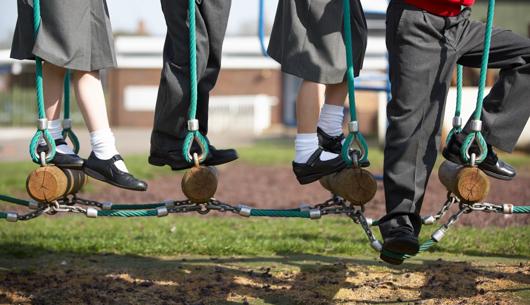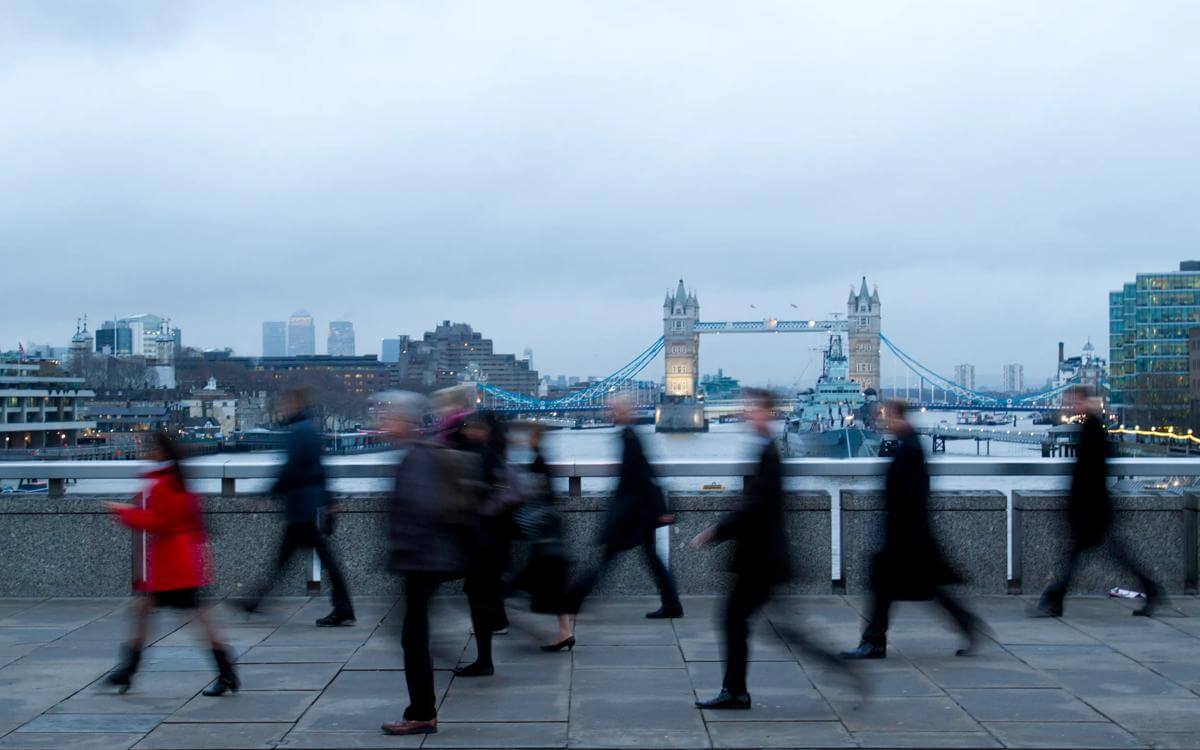HR and employment Covid-19 FAQs for schools and academies - September 2021
With many Covid-19 restrictions now removed we have prepared a new set of employment/HR related FAQs to support schools and academies for the new academic year commencing in September 2021.
Please note: the information contained in this legal update is correct as of the original date of publication.
With many Covid-19 restrictions now removed we have prepared a new set of employment/HR related FAQs to support schools and academies for the new academic year commencing in September 2021. The Government updated its operating guidance to schools on 19 July and again on 18 and 27 August 2021.
- Preparing for the new term
- Vaccines
- Wellbeing and managing anxiety
- Long Covid
Preparing for the new term
We advise that you:
- Review and update your risk assessment and share the results with your employees as soon as possible (perhaps at inset day)
- Continue to undertake health and safety checks of the school site prior to the new term
- Communicate with staff about any changes prior to the return about what measures are in place
We advise that you:
- Review and update your risk assessment and share the results with your employees as soon as possible (perhaps at inset day)
- Continue to undertake health and safety checks of the school site prior to the new term
- Communicate with staff about any changes prior to the return about what measures are in place
As the Government’s social distancing measures have now ended in the workplace, there is no longer the requirement for people, including vulnerable staff, to work from home. The DfE in their updated guidance refers schools to the Health and Safety Executive (HSE) who has recently published guidance on protecting vulnerable workers, including advice for employers and employees on how to talk about reducing risks in the workplace. The HSE guidance in relation to pregnant staff says:
“There is a long-standing requirement for employers to put in place measures to ensure workplace safety where a significant health and safety risk is identified for a new or expectant mother. Some pregnant workers will be at greater risk of severe illness from coronavirus. Employers will need to take this into account in their risk assessment.
If you cannot put the necessary control measures in place, such as adjustments to the job or working from home, you should suspend the pregnant worker on paid leave. This is in line with normal requirements under regulation 16(3) of the Management of Health and Safety at Work Regulations 1999.”
You will therefore need to consider your workplace to determine if you are able to put in sufficient control measures.
You should do this by reviewing the risk assessment for your pregnant employees. You may also want to consider whether a specific risk assessment is required for pregnant individuals, with mind to their specific job requirements. Your risk assessment should consider the risks to pregnant women as well as considering what action may need to be taken to mitigate those risks; this could include considering amending duties so that they carry out other work in school i.e. in an alternative role which you may be able to better implement the system of controls, or if none are available, working from home. Each pregnant employee’s role needs to be considered on its own merits and there is no blanket rule that requires them to work from home at any stage during their pregnancy. Particular attention should be paid to those who are at or over the 28 weeks gestation and you may need to change your arrangements for these individuals or where a pregnant employee has a specific medical condition, making them at greater risk. If the risk assessment cannot remove or manage the risks, then working from home (or if not possible, then paid leave) may be the necessary action.
So ultimately whether a pregnant employee can remain in school will depend on whether the risk assessment can mitigate the risks sufficiently in either the current role or a different role in school. Alternatively, if you can’t ensure this then they would need to work from home or if there is no work for them to do at home, they would need to be suspended on full pay.
As the Government’s social distancing measures have now ended in the workplace, there is no longer the requirement for people, including vulnerable staff, to work from home. The DfE in their updated guidance refers schools to the Health and Safety Executive (HSE) who has recently published guidance on protecting vulnerable workers, including advice for employers and employees on how to talk about reducing risks in the workplace. The HSE guidance in relation to pregnant staff says:
“There is a long-standing requirement for employers to put in place measures to ensure workplace safety where a significant health and safety risk is identified for a new or expectant mother. Some pregnant workers will be at greater risk of severe illness from coronavirus. Employers will need to take this into account in their risk assessment.
If you cannot put the necessary control measures in place, such as adjustments to the job or working from home, you should suspend the pregnant worker on paid leave. This is in line with normal requirements under regulation 16(3) of the Management of Health and Safety at Work Regulations 1999.”
You will therefore need to consider your workplace to determine if you are able to put in sufficient control measures.
You should do this by reviewing the risk assessment for your pregnant employees. You may also want to consider whether a specific risk assessment is required for pregnant individuals, with mind to their specific job requirements. Your risk assessment should consider the risks to pregnant women as well as considering what action may need to be taken to mitigate those risks; this could include considering amending duties so that they carry out other work in school i.e. in an alternative role which you may be able to better implement the system of controls, or if none are available, working from home. Each pregnant employee’s role needs to be considered on its own merits and there is no blanket rule that requires them to work from home at any stage during their pregnancy. Particular attention should be paid to those who are at or over the 28 weeks gestation and you may need to change your arrangements for these individuals or where a pregnant employee has a specific medical condition, making them at greater risk. If the risk assessment cannot remove or manage the risks, then working from home (or if not possible, then paid leave) may be the necessary action.
So ultimately whether a pregnant employee can remain in school will depend on whether the risk assessment can mitigate the risks sufficiently in either the current role or a different role in school. Alternatively, if you can’t ensure this then they would need to work from home or if there is no work for them to do at home, they would need to be suspended on full pay.
Shielding was paused in April 2021, and the Government’s requirement for social distancing measures in the workplace ended in July 2021. CEV employees are now advised to follow the same guidance as everyone else as a minimum, but also to consider whether there are any additional measures they may be able to continue to take. We advise that you meet with your employees who are CEV to discuss any concerns and determine what additional measures are required to ensure that risks are minimised.
You should be able to explain the measures you have in place to keep CEV staff safe at work. You may consider the continued use of face coverings or allow CEV staff to work in a particular office or classroom, to reduce the need for them to move around the school site.
Shielding was paused in April 2021, and the Government’s requirement for social distancing measures in the workplace ended in July 2021. CEV employees are now advised to follow the same guidance as everyone else as a minimum, but also to consider whether there are any additional measures they may be able to continue to take. We advise that you meet with your employees who are CEV to discuss any concerns and determine what additional measures are required to ensure that risks are minimised.
You should be able to explain the measures you have in place to keep CEV staff safe at work. You may consider the continued use of face coverings or allow CEV staff to work in a particular office or classroom, to reduce the need for them to move around the school site.
Vaccines
Some employers may want staff to be vaccinated to reduce health and safety risks within the workplace. However, relying on health and safety to justify such a requirement may be difficult for many employers as it would not be in line with the Government’s advice on the vaccine. The Government has currently said that they are not making vaccinations mandatory for UK citizens (save for those working in CQC-regulated care homes who are not exempt). The guidance says that an individual should be given enough information to enable them to make their own decision regarding vaccinations. It is therefore going to be difficult to justify going beyond the government guidance.
However, if you consider that it is appropriate for your provision, the starting point would be to assess whether it is a fair and proportionate measure to take. For example, in special schools where there may be particular health risks for some students, it may be more reasonable for employers to mandate staff to have the vaccine. Potentially an employer could issue a reasonable management instruction (save where an employee is medically exempt) on the basis that it is intended to protect health and safety – and therefore failure to comply could lead to disciplinary action. However, even in care homes, the government guidance is that all other options should be explored before taking disciplinary action (such as redeployment) and expressly states that not being vaccinated will not in itself amount to misconduct. As most school settings are not currently considered ‘high risk’ in the same way that say those living in a care home are, we would advise that this is a risky approach for schools to take (see below).
Making vaccinations mandatory for staff may leave you at risk of employment claims being brought against you. For example, these claims could include discrimination allegations from staff who have decided not to have the vaccination (for example on religious grounds, health grounds or because they are pregnant) and/or feel that their personal views and/or beliefs or health have not being considered. Likewise, if staff refuse to be vaccinated and are dismissed as a result, this could lead to claims for unfair dismissal (if they have the required two years’ service) unless there was a fair reason for dismissal, a fair procedure was followed, and dismissal was reasonable in all the circumstances. As above, the government guidance on care home vaccinations has already advised that not being vaccinated will not in itself amount to misconduct.
You should continue to encourage and recommend staff to have the vaccination and give time off to enable them to attend an appointment. Health and safety legislation obliges employers to take reasonable steps to ensure a safe working environment. It is likely that encouraging staff to be vaccinated is a reasonable step in ensuring your working environment is as safe as it can be for all your staff.
From the 16 August 2021, those individuals who are double vaccinated and who are identified as close contacts are not required to self-isolate (unless they have symptoms themselves). The requirement to self-isolate will continue for those who have not been double vaccinated and so this poses a difficult issue for schools who require their staff to be on site.
As a minimum non-vaccinated staff are entitled to receive SSP whilst isolating (as confirmed by government guidance). Where possible staff should be asked to work from home, continuing to receive their pay in the usual way. However, if this is not possible, and you wish to consider whether pay can be reduced to SSP only during isolation periods, we suggest that legal advice is taken in respect of the particular circumstances of the case. Please contact your HR consultant for more advice in the first instance.
As this is likely to consist of special category data, you would need to have an appropriate legal basis to process (collect and store) the data. Accordingly, it would not be appropriate for you to request this information from all staff on their return to school this term. However, there may be certain scenarios in which you would be able to show an appropriate legal basis to request vaccination status information from specific staff such as:
- when dealing with staff affected by a school based positive case to determine whether they need to isolate or not
- when dealing with staff who inform you that have been in close contact to or have been identified as a close contact with a non-school based positive case to determine whether they need to isolate or not
- when dealing with pregnant staff or those who have other vulnerabilities and a separate risk assessment is required.
For the purposes of establishing risks relating to ensuring sufficient staff are available to cover classes, you could ask staff to complete an anonymous survey to gain some idea of what percentage of staff have had both vaccinations within the particular window for them to be effective and base any risk assessment and contingency plans on this information as well as all other relevant factors.
Any information that is obtained from staff relating to vaccination status etc should be stored in a secure manner and only accessible to relevant key staff and only for the period of time it is necessary.
Yes, given that the current government guidance is that there is no need for those who are fully vaccinated to isolate, an employer would be entitled to treat any such employee as being on unpaid leave for that period. Bear in mind that this would not apply to those who are either completely unvaccinated or those who are not yet “fully” vaccinated i.e. may have only had one dose of a 2-dose vaccine or are not yet 14 days after their second dose of a 2-dose vaccine.
Wellbeing and managing anxiety
It is understandable that some staff will feel varying degrees of anxiety with restrictions being lifted and the particular impact of this in schools. All employers have a duty of care to their employees, and this extends to their mental health. Make sure you have explained to all staff the measures you are putting in place. Discuss with all staff any changes in place as part of these measures.
Some staff may be particularly anxious about the new school year, and you may need extra systems in place to support staff wellbeing. Education Support provides a free helpline for school staff and targeted support for mental health and wellbeing.
MindEd have also developed a coronavirus (Covid-19) staff resilience hub with advice and tips for frontline staff.
Now that there are no restrictions, staff may not have a right to full pay if they do not attend work without good reason, particularly if you can demonstrate the safety measures being taken and evidence that you are acting reasonably. As a very last resort you could consider taking disciplinary action. Our advice is that you consider each case individually, take any health and safety concerns very seriously and seek advice before commencing any form of disciplinary action. As always it is vitally important to keep reviewing the situation and reassuring your staff through regular communication.
Long Covid
For some people, coronavirus can cause symptoms that last weeks or months after the infection has gone. This is sometimes called post Covid-19 syndrome or "long Covid". How long it takes to recover from coronavirus is different for everybody. Many people feel better in a few days or weeks and most will make a full recovery within 12 weeks. But for some people, symptoms can last longer.
The chances of having long-term symptoms does not seem to be linked to how ill the individual is when they first get coronavirus. People who had mild symptoms at first can still have long-term problems. The NHS has produced a list of the possible symptoms of long Covid which is regularly updated.
When someone is off sick with long Covid rather than infectious with Covid, then their absence should be treated in the same way as any other absence. This is in line with the guidance from ACAS who say “the usual rules for sickness absence and sick pay apply when someone is off work because of long COVID”. You should manage the absence in accordance with your sickness absence policy, including review meetings and referrals to occupational health. You should continue to keep in touch with your employee whilst they are absent.
Yes, the absence would count towards sickness absence triggers as outlined in your policy. It is likely that the employee would be absent on a long-term basis and it would be unreasonable not to manage the absence and for the employee to be off indefinitely. Therefore, you should manage the absence as you would any other long-term absence. If your policies have been amended to discount Covid-related absence from absence triggers, then you should revisit this wording to ensure that it doesn’t inadvertently include long Covid.
There is the potential that long Covid may be considered to be a disability under the Equality Act 2010 if it is deemed to meet the criteria of a ‘physical or mental impairment’ that has a ‘substantial’ and ‘long-term’ negative effect on an individual’s ability to do normal daily activities. Therefore, employers need to be mindful of treating employees in a non- discriminatory way, as well as making reasonable adjustments where possible as otherwise there may be the risk of discrimination claims further down the line. This may include adjusting the sickness absence triggers as a reasonable adjustment as you may do with other disabilities that impact on attendance.
Any legal argument about whether or not long Covid would be defined as a disability would be determined by an Employment Tribunal. We are not aware of any such cases having yet been heard in the Employment Tribunal, but will update this guidance as necessary in the event of such cases being published. In any event, the question of disability is very much an individual one and would be considered on a case-by-case basis.
Yes. Unlike when they an employee is infectious with Covid and they receive full pay, once they are no longer suffering from infectious Covid (and therefore have to isolate) but have the symptoms of long-Covid then their sick pay should be in accordance with their entitlement under the relevant sick pay scheme (for example Green Book and Burgundy Book). You may receive a request to extend sick pay in these circumstances and you have discretion to do so under the relevant sick pay scheme depending on the circumstances of case but you will want to be consistent with how you have dealt with previous requests of this nature.
9. Absences arising from accidents, injury or assault at work
9.1 In the case of absence due to accident, injury or assault attested by an approved medical practitioner to have arisen out of and in the course of the teacher’s employment, including attendance for instruction at physical training or other classes organised or approved by the employer or participation in any extracurricular or voluntary activity connected with the school, full pay shall in all cases be allowed, such pay being treated as sick pay for the purposes of paragraphs 3 to 7.5 above, subject to the production of self-certificates and/or doctors’ statements from the day of the accident, injury or assault up to the date of recovery, but not exceeding six calendar months.
10. Contact with infectious diseases
10.1 When the approved medical practitioner attests that there is evidence to show a reasonable probability that an absence was due to an infectious or contagious illness contracted directly in the course of the teacher’s employment full pay shall be allowed for such period of absence as may be authorised by the approved medical practitioner as being due to the illness, and such absence shall not be reckoned against the teacher’s entitlement to sick leave under paragraph 2 above, though such absences are reckonable for entitlement to Statutory Sick Pay.
An “approved medical practitioner” is defined as “any registered medical officer nominated or approved by the employer”. This is likely to be your occupational health provider rather than an employee’s GP.
In relation to clause 9.1, we would advise that the clause is unlikely to apply to long Covid due to the prevalence of the illness in the wider community at the time. We are not sure how a doctor will be able to attest that the absence was due to accident, injury or assault that has “arisen out of and in the course of the teacher’s employment”, both because catching it would not be deemed an accident, injury or assault and also as there were so many cases in the wider community. In relation to clause 10.1, again it will be very difficult to attest that the absence was contracted directly in the course of the employment due to the prevalence in the community. In any event, we would advise that this relates to when the individual is ill with an infectious or contagious disease, rather than the aftermath of it. Otherwise the continuation of full pay could be unlimited. When someone is sick with long Covid the absence is no longer due to an infectious or contagious disease.
As with any dismissal there are likely to be risks. However, if you follow a fair process and make reasonable adjustments which could include adjustments to the process and adjustments to their role, then it may be reasonable to dismiss an employee who is not able to return to work or whose sickness absence record is not acceptable. However, we would advise that you contact us if you are at the stage of considering dismissing an employee due to long Covid so that we can provide a legal view of the risks associated with the dismissal. We also do not yet know how Employment Tribunals will view dismissals linked to Covid-19 and therefore there may be risks of unfair dismissal/discrimination claims if not managed correctly.
Contact

Emma Hughes
Partner
emma.hughes@brownejacobson.com
+44 (0)330 045 2338







































